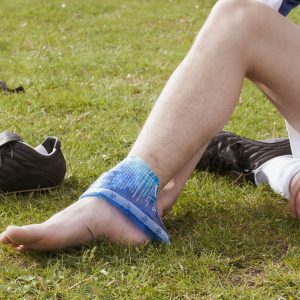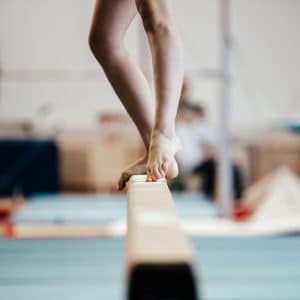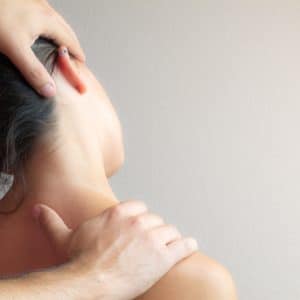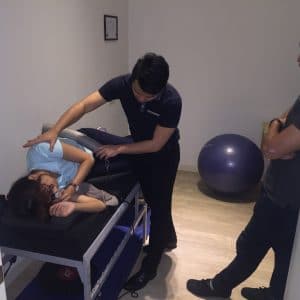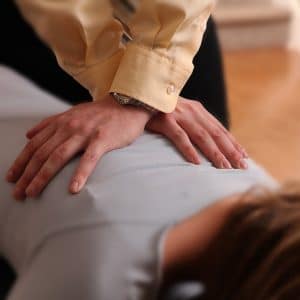
Exercise and Recovery Everyone knows that exercise is important – we’ve read numerous articles on the many benefits on exercise, yet it might still be difficult to drag ourselves out for a run/to the gym/to the field. But does exercising actually give you a long life? Well, studies have shown that physical activity is not only linked to benefits such as an improvement of our physical and mental health, but also aids in the reduction of non-communicable diseases (NCDs). First of all, what are NCDs? NCDs are diseases that are not infectious, such as cardiovascular diseases, cancers, chronic respiratory diseases, and diabetes – infamous issues to our ears. Who are more susceptible to NCDs? Risk factors such as tobacco use, physical inactivity, unhealthy diet, and alcohol abuse all increase the risk of NCDs, as well as metabolic issues such as raised blood pressure, obesity, and raised blood glucose. These metabolic issues in turn contribute to an increased risk of NCDs in an individual. So, why is this important to us, and how can exercise help? It has been found that 73% of the deaths in Malaysia (that also happens to be Asia’s most obese country) were caused by NCDs, with cardiovascular diseases being the leading cause of half of that percentage. Individuals who are obese are put at a much greater risk of many diseases, such as high blood pressure, Type 2 diabetes, and coronary heart disease. How can we counter this? The answer is simple – a healthy diet and regular exercise. Understandably, dieting might be a difficult feat for many. Especially in the land of extremely good food, and even more so with the many festive seasons all throughout the year! However, just keeping more active, even in the slightest bit, can help reduce...
 Breathing is a daily part of our lives but we hardly think about something that occurs nearly every second of the day. With science, we know that the average human takes in oxygen from the air, where it enters our lungs, and the exchange of oxygen for carbon dioxide occurs. Freshly oxygenated blood from the lungs enters our heart, and is then pumped to the rest of our body, occurring every single second that we are living. This simple yet intricate system of gaseous exchange that happens unconsciously is, in part, governed by our breathing. Scientifically, the term is “respiration” – a more fancy word for the process of taking air into our lungs, and breathing it out again. Have you ever observed a baby breathing? Their shoulders and chest are relaxed. There is a gentle rise and fall of their bellies as they inhale and exhale. Many of us do not realise that as we breathe, our chest expands and our bellies remain ‘tight’ and drawn in. “…we may also develop unhealthy breathing patterns such as over-breathing, chest-breathing, and holding your breath.” We often forget the importance of breathing; in turn, forgetting that every system in the body relies on oxygen gained through that very act itself. As we go through the stresses of life, we may also develop unhealthy breathing patterns such as over-breathing, chest-breathing, and holding your breath (Perhaps you’ve found yourself forgetting to breathe?). Breathing habits like these lead to a shortage of oxygen and energy, creating physical stress in the body which may manifest in symptoms such as mental and physical lethargy, increased heart rate, increased feelings of stress, and upper shoulder pain when movements begin to occur through the chest and shoulders in our attempt to suck air in. Are you a belly-breather...
Breathing is a daily part of our lives but we hardly think about something that occurs nearly every second of the day. With science, we know that the average human takes in oxygen from the air, where it enters our lungs, and the exchange of oxygen for carbon dioxide occurs. Freshly oxygenated blood from the lungs enters our heart, and is then pumped to the rest of our body, occurring every single second that we are living. This simple yet intricate system of gaseous exchange that happens unconsciously is, in part, governed by our breathing. Scientifically, the term is “respiration” – a more fancy word for the process of taking air into our lungs, and breathing it out again. Have you ever observed a baby breathing? Their shoulders and chest are relaxed. There is a gentle rise and fall of their bellies as they inhale and exhale. Many of us do not realise that as we breathe, our chest expands and our bellies remain ‘tight’ and drawn in. “…we may also develop unhealthy breathing patterns such as over-breathing, chest-breathing, and holding your breath.” We often forget the importance of breathing; in turn, forgetting that every system in the body relies on oxygen gained through that very act itself. As we go through the stresses of life, we may also develop unhealthy breathing patterns such as over-breathing, chest-breathing, and holding your breath (Perhaps you’ve found yourself forgetting to breathe?). Breathing habits like these lead to a shortage of oxygen and energy, creating physical stress in the body which may manifest in symptoms such as mental and physical lethargy, increased heart rate, increased feelings of stress, and upper shoulder pain when movements begin to occur through the chest and shoulders in our attempt to suck air in. Are you a belly-breather...


